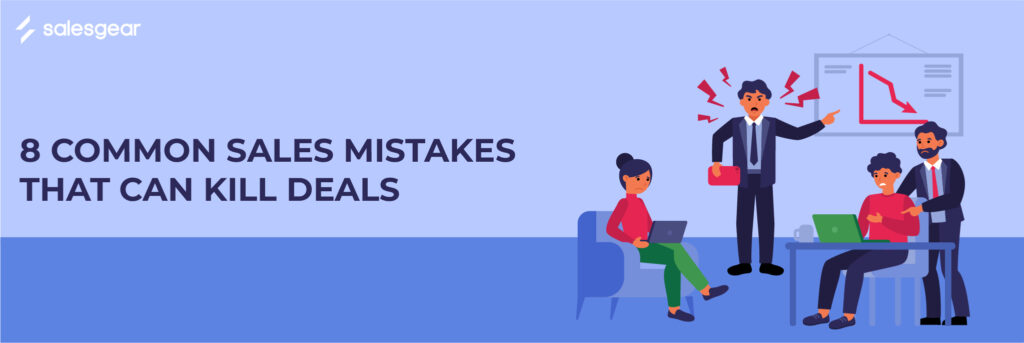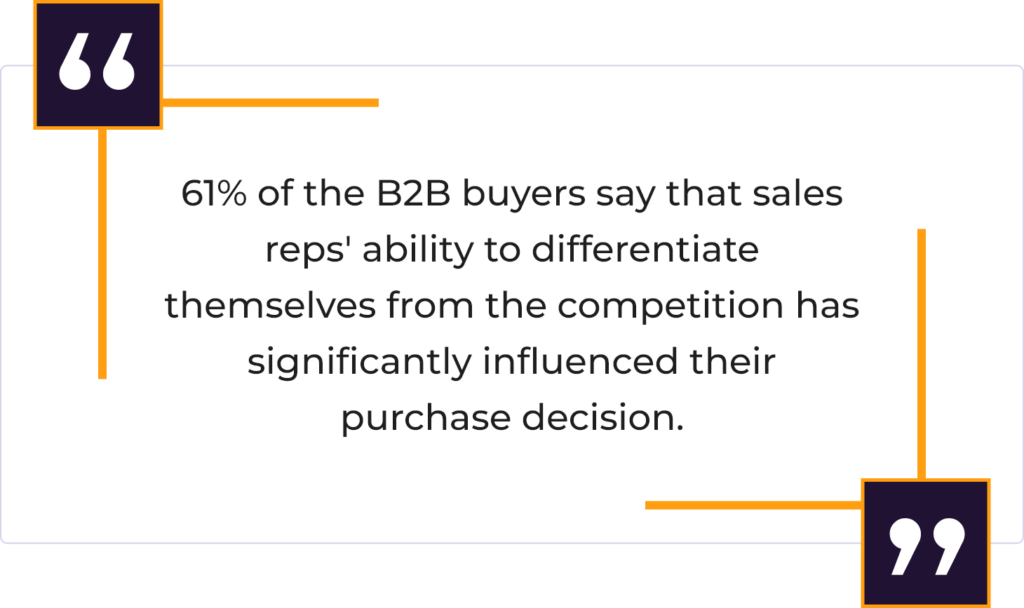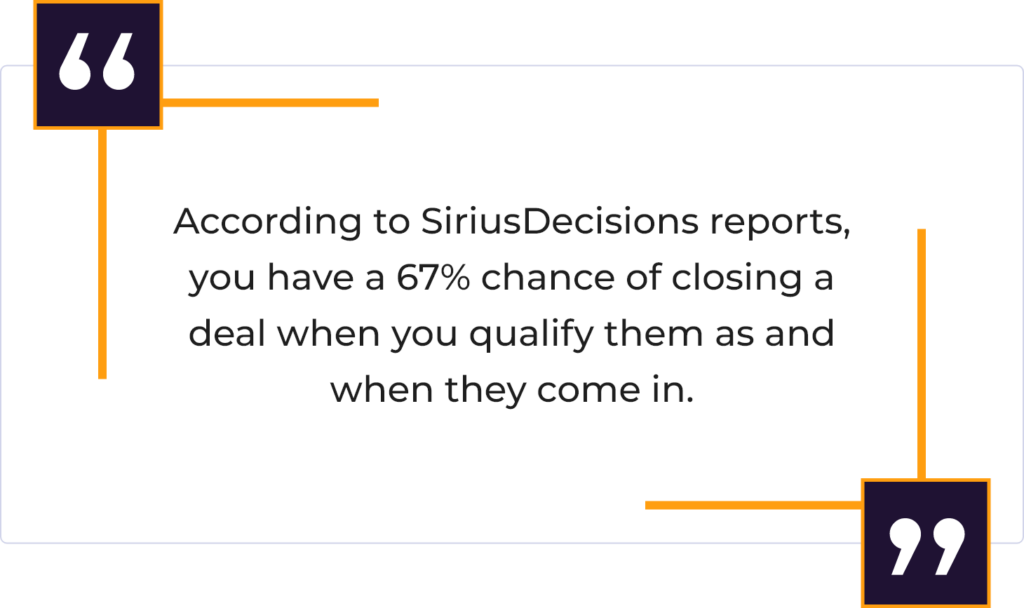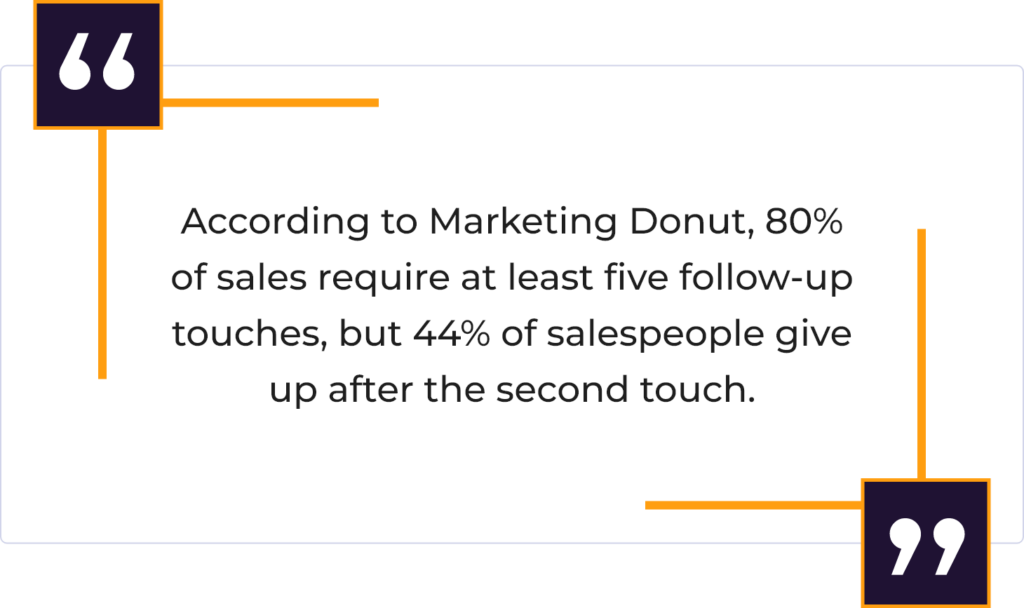
Human error is inevitable in any job and sales is no exception. But when a salesperson makes a mistake, there is a great chance the company loses revenue. In this blog, we will look at some common sales mistakes and how to avoid them to increase your chances of achieving and exceeding sales targets.
Not Understanding Buyer’s Journey
Buyer’s Journey is a framework that helps you understand and address the needs of your target audience at each stage of the purchasing process. The buyer’s journey involves 3 stages:
- Awareness: A prospect needs to know that there is a problem to solve. Typically, your goal is to create awareness that your business exists to solve that particular problem.
- Consideration: Once the problem is identified, prospects start to research and evaluate solutions. It is your time to position yourself as a viable option and differentiate yourself from the competition.
- Decision: At this stage, prospects are ready to move forward with a solution. You must provide the buyers with the necessary information, run through contracts and lock in on terms and promises.
One of the common sales mistakes is not understanding the buyer’s journey and pushing prospects to the ‘decision stage’ without guiding them through the process. Understanding the buyer journey helps you offer them the right product at the right time say chain brush sets for procreate as an easy download.
By aligning your sales efforts with the buyer’s journey, you can provide the right information and support to guide potential buyers through the purchasing process and increase the likelihood of conversion.
Not Building Relationships with Decision-makers
Building a relationship with a prospective buyer is a crucial aspect of selling. When you prioritize relationships over transactions, you enhance customer loyalty and increase the likelihood of long-term business partnerships.
Decision makers more often than not rely on trusted relationships when making purchase decisions. You need to build rapport and trust with your prospects to increase your chances of influencing their decision.
In competitive scenarios, building relationships with decision-makers can give you a competitive edge. By fostering a connection, you differentiate yourself from competitors and position yourself as a preferred partner.
Neglecting to build a relationship with key decision-makers is one of the common sales mistakes that can hinder your ability to influence the final decision-making process and potentially lead to missed opportunities.
Not Being Able To Articulate the ROI
According to a survey by Gartner, 95% of buyers require compelling ROI evidence before making a purchase decision. It is one of the common sales mistakes for a sales rep to not develop the ability to articulate the ROI your product or service can bring in. So, what exactly is “Articulate the ROI”?

Articulating the Return on Investment effectively involves conveying the financial value and benefits that your product or service brings to the buyer’s organization. If your product or service helps generate revenue, showcase the potential increase in sales or new revenue streams it can create. Share success stories and testimonials from satisfied customers who have achieved tangible results by using your product or service.
By effectively articulating the ROI, you can instill confidence in decision-makers and provide them with the evidence they need to justify their investment. Remember to customize your approach to address the buyer’s specific needs and challenges, and be prepared to answer any objections they may have.
Underestimating the Competition
Another common mistake sales reps make is underestimating the competition. It could be detrimental to your sales cycle. It is of utmost importance to research and understand what your competitors are doing, how are they perceived in the market, their strengths and weaknesses, and their positioning.
61% of the B2B buyers say that sales reps’ ability to differentiate themselves from the competition has significantly influenced their purchase decision. If you can understand the competition and position yourselves against it, you can stay way ahead of the competition.
Convey your unique value proposition and differentiators. Focus on the aspects that set you apart from the competition and provide tangible benefits to the customer. Emphasize the value and advantages that your offering brings.

By understanding the competition, you can proactively position yourself as the preferred choice in the market. This allows you to effectively differentiate yourself, address customer needs more accurately, and increase your chances of winning deals.
Focusing on your Product, not the Prospect’s Needs
Neglecting the needs of your prospects and focusing solely on your product is another common sales mistake to avoid.

Understanding the prospects’ needs, pain points, and challenges is imperative to building a meaningful relationship and driving successful sales outcomes.
You can see a significant improvement in the number of deals you close when you start focusing on understanding the buyer’s needs and providing customized solutions. Take the time to actively listen to your prospects. Ask open-ended questions to uncover their pain points, challenges, and goals.
Tailor your messaging and solutions to directly address the specific needs and pain points of your prospects. Adopt a customer-centric mindset throughout the sales process. Show genuine empathy, prioritize their needs, and provide guidance.
Shift the focus from your product to the needs of your prospects to position yourself as a trusted advisor and increase the likelihood of building strong relationships. Understanding their pain points and providing tailored solutions establishes you as a valuable partner in their journey toward achieving their goals.
Not Qualifying Leads Properly
The importance of Lead Qualification is often brushed under the carpet by sales reps. Before you start putting efforts into a deal, you should do the due research to make sure that the lead is a good fit for the company.
According to SiriusDecisions reports, you have a 67% chance of closing a deal when you qualify them as and when they come in. We couldn’t agree more. The consequences of a bad fit lead closing for your company is a waste of time and resources.
Create standardized lead qualification processes and use tools such as questionnaires or phone scripts to gather necessary information and evaluate the prospect’s readiness to proceed. This helps you focus your efforts on those prospects who are more likely to benefit from purchasing your offering.

When you are sourcing a lead, you should always ask yourself why that prospect could be a good fit for your offerings. If you can’t answer that question without evidence, it is time to move on and look at another company that could benefit from your offerings.
Not Setting clear timelines
Defining the next steps during your demo could make or break the deal. You must define the ideal next steps and agree upon them with your prospects. When the next steps are clear and established, you can be sure that the sales cycle moves forward at a good pace.
Lack of clear timelines is one of the top reasons for sales cycles lengthening beyond expectations, leading to increased costs and reduced efficiency. Define a clear, step-by-step sales process that outlines the key milestones, activities, and timelines for each stage of the sales cycle. This provides a framework both for you and the prospect to understand the expected timeline.
Here are a few quick and reliable tips to negate this common sales mistake:
- Set milestones: Set deadlines for important milestones, such as product demos, proposal submissions, or decision-making meetings.
- Qualify Prospects for Timeline Fit: During the qualification stage, assess the prospect’s readiness and timeline alignment. Determine if their timeline for making a decision aligns with your sales process
- Follow-ups and reminders: Regularly follow up with prospects to ensure they are progressing through the sales process. Utilize reminders, alerts, and notifications to stay on top of important deadlines and ensure timely actions.
By setting clear timelines, you can keep the sales cycle moving, manage expectations, reduce delays and increase the efficiency of your sales process. Clear timelines also contribute to better sales forecasting and sales performance.
Lack of effective sales follow-up

The power of follow-up sales is often underestimated by sales reps due to fear of rejection. According to Marketing Donut, 80% of sales require at least five follow-up touches, but 44% of salespeople give up after the second touch.
Establish a structured follow-up plan that outlines the frequency, channels, and content of follow-up communication. This ensures consistency and helps you stay organized. Be persistent in your follow-up efforts without being pushy. Consistently engage with prospects to stay top-of-mind and demonstrate your dedication to their needs.
Following up demonstrates professionalism and competence while building the necessary rapport and trust with your prospects. Timely responses and addressing concerns shows that you care about their problem and are helping them solve it. Lack of follow-up not only affects your sales but also the efforts of marketing, support, and development who worked hard to make a compelling product or service.
Here are some of the tips we follow so we don’t miss a follow-up:
- Use a CRM: Leverage the availability of technology. Set a reminder to track when to follow up with whom.
- Share value-added content: Share relevant case studies, brochures, and articles to show you know what you are doing.
- Multi-channel follow-up: Follow up on multiple channels – email, phone, and social media. Analyze where the prospect is active and follow up via that channel. You can also follow up through the channel the prospect is comfortable with.
It is important to devise an effective sales follow-up strategy to nurture relationships, address concerns and keep the conversation alive. By following up in a timely and proactive manner you can keep the momentum going in the sales process.
Tips to Hold the Aces to Win Deals
Articulate Questions and Responses Effectively
“We are a Sales Engagement Platform that solves email deliverability problems”
“While we talked to a lot of industry experts, we found that once that Send button is clicked, they don’t have control over the emails whatsoever. We took it up as a challenge and made sure that 9 out of 10 emails reach the inbox”
Do you see the difference between the above two statements? Which one is more captivating?
Of course, the second one is because it keeps the prospect guessing until the last second and pulls the rabbit out of the hat.
The way you convey your message can have a significant impact on how it resonates with your prospects. Neuroscience studies have shown that emotions play a significant role in the buying process, with logic often being used to rationalize emotional decisions.
Anticipate and address objections proactively
Objection handling is an art. It takes years of practice and talking to customers to master the art. Put yourself in their shoes and ask yourself “What could make them hesitant to buy from me?”
When you encounter an objection, it is not the time to give up and send a breakup email. It is time to shield yourself with Objection handling techniques. Understand the prospect’s situation, empathize with their problems, ask open-ended questions, and tailor your solution to solve their problems.
If you find yourself unable to negotiate because of an objection, check out one of our recent pieces where we talk about the 10 Objection Handling Tips for Your Next Sales Call
When an objection is raised, respond in a friendly and understanding manner. Dig deeper to understand the root cause of the objection. Show genuine interest in their perspective and maintain a friendly tone throughout the conversation.
Create a Personalized Experience
There is no one size fits all in Sales, it is a common mistake sales reps make. It is important in today’s world to develop a solution that meets the unique needs of your prospects.
For example, let’s say you are looking for an OTT platform and are in talks with a couple of the popular platforms available. After the initial sign-up process, you receive 2 emails. One of them says “Hey Viewer’ and another says “Hey {{your_name}}” Which one would give you the real customer experience?
For me, it is the second one. Because he started by mentioning my name. And it is a common psychological feeling to feel special when you are addressed individually rather than in a crowd.
Similarly, with sales calls, you need to put effort to understand your customers, their likes and dislikes, the city they are living in, and whether they like football. It creates a personalized experience for the user and they will have a long-term relationship with you and your offering. Maybe try it out next time!
Conclusion
The eight common sales mistakes discussed can have a significant impact on the outcome of sales interactions and ultimately kill deals if not addressed appropriately. By recognizing and addressing these common sales mistakes, you can enhance your effectiveness, build trust, and increase your chances of closing deals successfully.
Sales is a constantly evolving field, and ongoing learning, self-reflection, and improvement are essential for you to excel. By avoiding these common mistakes and continue honing their skills, you can position yourselves as trusted advisors, delivering value to their prospects and securing successful outcomes in the highly competitive sales landscape.